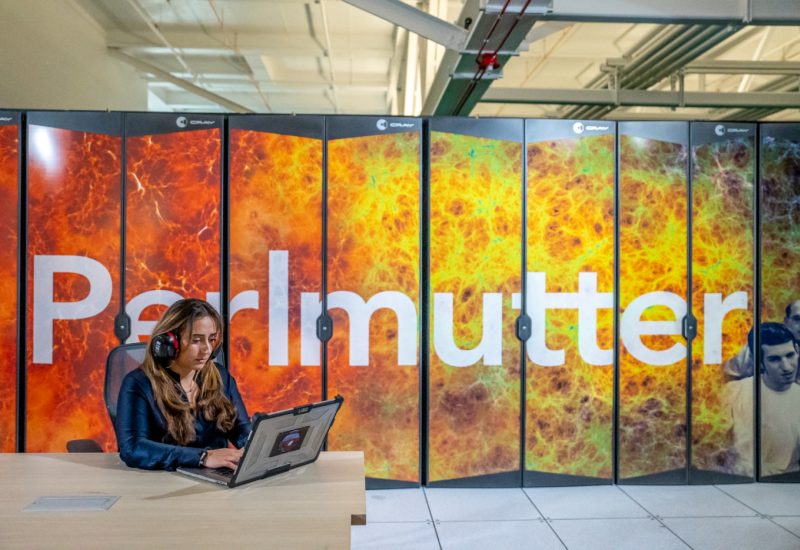About Us
Mission: science
NERSC’s mission is to accelerate scientific discovery at the DOE Office of Science through high performance computing and data analysis.
As the mission scientific computing facility for the U.S. Department of Energy (DOE) Office of Science (SC), NERSC is the principal provider of high performance computing and data resources and services to its six program offices:
- Advanced Scientific Computing Research
- Basic Energy Sciences
- Biological and Environmental Research
- Fusion Energy Sciences
- High Energy Physics
- Nuclear Physics
Fundamental to that mission is enabling computational science of scale, in which large, interdisciplinary teams of researchers attack fundamental problems in science and engineering that require massive calculations and that have broad scientific and economic impacts.
In 2024, the National Energy Research Scientific Computing Center (NERSC) celebrated 50 years of accelerating scientific discovery for the DOE Office of Science (SC).
Launched in 1974 as a computing resource for fusion energy research at Lawrence Livermore National Laboratory, NERSC quickly expanded its role to include users from all SC program offices.
In 1996, the center moved to Lawrence Berkeley National Laboratory.
Today, NERSC is one of the world’s most scientifically productive high performance computing (HPC) centers. Our 11,000-plus users produce on average 2,000+ refereed publications annually using NERSC resources. Over the years, NERSC has been privileged to serve seven Nobel Prize-winning scientists or their teams.
A DOE National User Facility, NERSC is operated as a division of Lawrence Berkeley National Laboratory (Berkeley Lab), which is known as the “home of team science.”
NERSC is one of four divisions in the Berkeley Lab Computing Sciences Area (CSA), housed in the Shyh Wang Hall computational research and theory facility. The others are the Energy Sciences Network (ESnet), another DOE National User Facility, and two research divisions: Scientific Data Division and Applied Mathematics and Computational Research Division.
Shyh Wang Hall
Home to NERSC systems and staff on the Berkeley Lab campus, Shyh Wang Hall is a LEED Certified building with unique seismic safety and energy efficiency features.
Who uses NERSC?
Researchers working on a thousand different projects use NERSC to perform unclassified basic scientific including searching for better materials for batteries, analyzing data from particle accelerators, searching for mysterious dark matter and dark energy, investigating protein structure, and a host of other scientific endeavors.
All research projects that are funded by the DOE Office of Science and require high performance computing support are eligible to apply to use NERSC resources. Projects that are not funded by the DOE Office of Science but that conduct research that supports the Office of Science mission may also apply.

How we name systems
To underscore its scientific mission, NERSC names its computing systems for prominent researchers. Installed in 2021, the Perlmutter system is named in honor of Berkeley Lab’s Nobel Prize-winning astrophysicist Saul Perlmutter. Previous NERSC systems have honored Grace Hopper, Benjamin Franklin, Marie Curie, George Washington Carver, Gerty Cori, and Glen Seaborg, among others.










